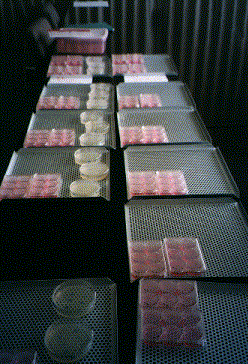 Project Activity (First Year)
Project Activity (First Year)
 Project Activity (First Year)
Project Activity (First Year)
 Researches in the First Year
Researches in the First Year
* "Toh-ate" looks like "waiqi", but it is not the same. "Toh-ate" is a term from Japanese traditional martial arts. "Toh-ate" is seen as a powerful signal by psi. However, we don't have complete theories explaining "toh-ate" or "waiqi". Therefore, the difference between "toh-ate" and "waiqi" may exist only in appearance. 6. Attempts to Develop an in vitro Experimental System for Detecting the Effect of Stimulant Emission using Cultured Human Cells 6)
6. Attempts to Develop an in vitro Experimental System for Detecting the Effect of Stimulant Emission using Cultured Human Cells 6)
References
1)
YAMAMOTO M., HIRASAWA M., KAWANO K., YASUDA N. and FURUKAWA A.: Journal of International Society of Life Information Science, 14, 97-101, 1996.
2)
HIRASAWA M., YAMAMOTO M., KAWANO K. and FURUKAWA A.: Journal of International Society of Life Information Science, 14, 43-48, 1996.
3)
HIRASAWA M., YAMAMOTO M.: Journal of International Society of Life Information Science, 14, 32-37, 1996.
4)
HIRASAWA M., YAMAMOTO M., KAWANO K., FURUKAWA A. and YASUDA N.: Journal of International Society of Life Information Science, 14, 185-195, 1996
5)
YAMAMOTO M., HIRASAWA M., KAWANO K., KOKUBO H., KOKADO T., HIRATA T., YASUDA N., FURUKAWA A. and FUKUDA N.: Journal of International Society of Life Information Science, 14, 228-248, 1996.
6)
YAMAUCHI M., SAITO T., YAMAMOTO M. and HIRASAWA M.: Journal of International Society of Life Information Science, 14, 266-277, 1996.
Last Modified: July 1, 1999
Maintained by KOKUBO Hideyuki